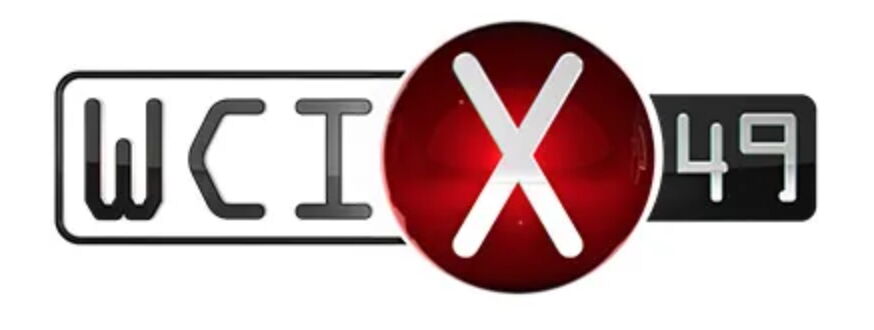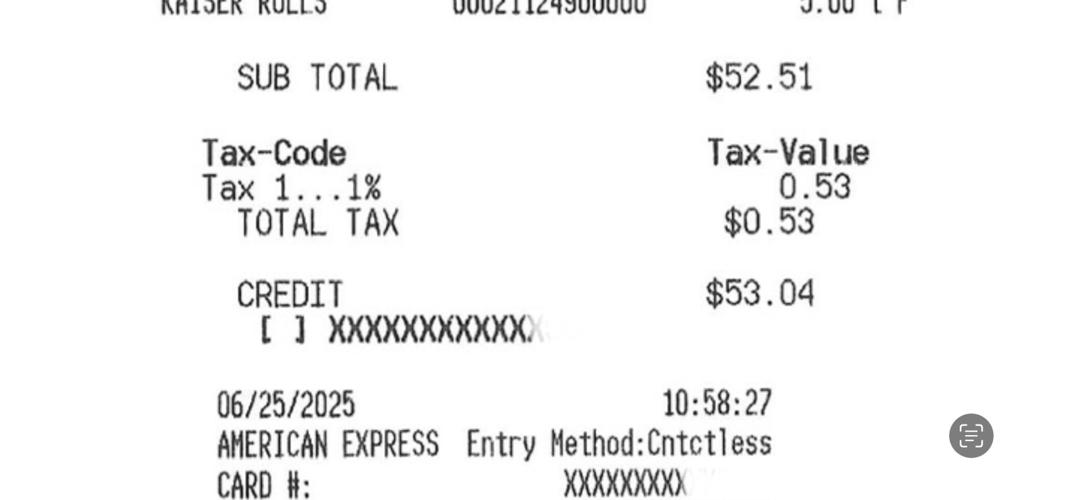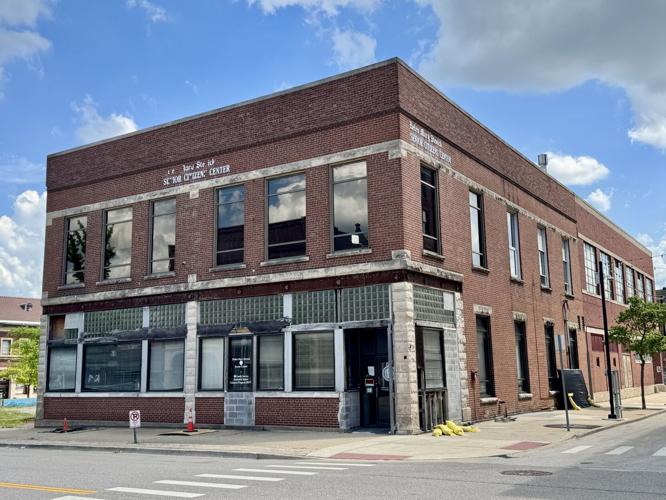Drop in a question of your very own BY CLICKING HERE or by emailing Kathy Reiser at mailbag@news-gazette.com.
Which local towns have enacted a new grocery tax to replace an expiring state tax … plans for use of a state grant in downtown Champaign … whether a favorite local sculpture is one-of-a-kind … and some things current Health Alliance Medicare Advantage customers can do right now to be ready to choose a different insurer during the annual enrollment period in the fall. All in this week’s Mailbag.

Route 45 work in Champaign, Savoy
“I noticed a sign announcing that road work would begin on Dunlap Avenue/South Neil Street on June 25. What are they doing, and when will they be done?”
Illinois Department of Transportation engineer Kensil Garnett tells us the project consists of 3.038 miles of standard overlay with (Americans with Disabilities Act) improvements and traffic signal modernization from Springfield Avenue in Champaign to Curtis Road in Savoy.
Cross Construction is the contractor for the project, with an awarded cost of $14,499,778.47. The completion date for the project is Aug. 1, 2026, plus 10 working days. That is not a typo; Garnett says the date really is in 2026.

Plans for use of state grant
“A month or two ago, I read that Bubin Properties had been awarded a $771,000 state grant to renovate the old News-Gazette printing plant building at 48 Main in Champaign and some neighboring properties. What are their plans for those spaces?”
The grant, announced by the Illinois Department of Commerce and Economic Opportunity in April, is for “Phase 1 of the renovation planned for the vacant building at 48 East Main Street in downtown Champaign and for adjacent properties.” The press release said this local grant was one of 25, totaling $30 million, through the Rebuild Illinois Downtowns and Main Streets (RDMS, $20 million) and Research in Illinois to Spur Economic Recovery (RISE, $10 million) programs “to revitalize commercial corridors and downtown areas throughout the state and accelerate local economic initiatives.”
I talked with Janet Bubin, who said they have not yet received the grant money from the state. She said her understanding is that there are “new regulations” under the Trump administration, and the state is still trying to sort out what that might mean for grants of this kind.
She said when Bubin Properties applied for the grant, they did so with an eye toward turning 48 Main into an apartment building, because there already seemed to be enough available retail and office space in the area.

Are there other Mr. Eggwards sculptures?
“I recently saw a photo of a sculpture uncannily similar to Champaign’s Mr. Eggwards in northern Illinois. Are there other such statues around the country?”
The jaunty Mr. Eggwards, who sits atop a retaining wall near The Esquire in downtown Champaign, is certainly one of C-U’s most Instagrammable landmarks. Some folks who have never noticed the plaque beneath the sculpture erroneously call him Humpty Dumpty.



It seems another Mr. Eggwards is on display in Mt. St. Mary Park in St. Charles, Illinois. They are the creation of Minneapolis-based sculptor Kimber Fiebiger, whose website says she “creates bronze sculptures that range from fun and whimsical to classical and contemporary.” A quick look through her online gallery and catalog suggests egg shapes with human characteristics are among her favorite whimsical subjects. She sells large and small versions of her work at the art-by-kimber.com website.
I reached out to her and she declined to say whether, and where, other Mr. Eggwards statues are installed around the country. A web search turned up references to other versions of Mr. Eggwards in Mason City, Iowa, and Suwanee, Ga., but I do not know whether those are permanent installations.
Fiebiger told me “bronze sculptures are often created in limited editions for several reasons, primarily to control the number of reproductions and maintain a sense of exclusivity and value. Creating editions also allows artists to offer their work at a more accessible price point than a unique piece, while still maintaining quality and artistic control.”
She said limited editions — with a specific number of sculptures produced from the same mold — help to control the supply and maintain the value of the artwork. This exclusivity can be a strong selling point for collectors. Limited editions also allow an artist to oversee the casting and finishing process, ensuring that each piece meets their quality standards. The sculptor can make adjustments to the mold or patina for a specific piece, further refining the final product.
Fiebiger said the lost-wax casting process, commonly used for bronze sculptures, involves creating a mold from which multiple copies can be produced. This allows for the efficient reproduction of a sculpture, especially when compared to the labor-intensive process of creating a unique piece from scratch.
Bronze sculpture has a long history of being produced in editions, particularly in the 19th century, when commercial bronze foundries flourished. She said this practice continues today, with sculptors often working with foundries to produce their editions.
If any local golf courses are looking for a piece of golf-themed outdoor art, Fiebiger offers a 6-foot-tall sculpture of a dapper golfer named Scotch Egg. The price: $60,000.

Which local towns have enacted a grocery tax?
“Which local governments have enacted a 1% local tax on groceries to replace the one that the state is dropping at the end of the year?”
In August 2024, Gov. J.B. Pritzker announced the state-imposed 1% grocery tax would be repealed as of Jan. 1, 2026. The money raised through that tax is distributed to Illinois municipalities. If they choose to do so, cities, towns and villages have the option of passing their own grocery-tax ordinance that would offset the loss of the state tax dollars. The approval of local voters is not required.
According to an Illinois Department of Revenue list released on June 25, area communities that had enacted their own grocery tax include Arcola, Cerro Gordo, Cissna Park, Clinton, Danville, Farmer City, Fisher, Georgetown, LeRoy, Mahomet, Ogden, Roberts, Thomasboro, Tilton and Villa Grove. The new local taxes will be implemented on Jan. 1 as the state tax expires.
At its Wednesday evening meeting, the Urbana City Council became the latest local municipality to pass a 1% grocery-tax ordinance.
When the elimination of the state tax was announced, the Illinois Municipal League released a document showing that the City of Champaign, with a population of 88,302, stood to lose $2,703,704 in annual revenue after its repeal. Urbana, population 38,336, faced a loss of about $1 million. Even smaller municipalities’ budgets would be impacted; Clinton, with a population of 7,004, would lose about $250,000 in revenue when the repeal goes into effect.
In 2024, the Champaign City Council “considered several different options and approved a 0.25% increase to the city's Home Rule sales tax rate,” said spokesperson Jeff Hamilton. “That change will go into effect on Jan. 1, 2026, coinciding with the expiration of the state’s grocery tax.”
The Village of Savoy has not enacted a replacement grocery tax, although the village board did discuss it last winter. Village President John Brown says they decided to postpone a vote on the issue, at least until any new board members could be seated after the April 2025 election.
Brown expects the measure to come before the board later this summer, once the new village administrator, Andy Quarnstrom, has had a chance to settle in. Based on previous board members’ expressions of support, and the fact that the election yielded only one new trustee, Brown said “I expect it to pass pretty easily.”
For municipalities that wish to implement a local grocery sales tax effective on Jan. 1, 2026, Illinois Department of Revenue spokesperson Maura Kownacki says the first step is to pass an authorizing ordinance. A certified copy of the ordinance must then be submitted to IDOR, postmarked by Oct. 1, 2025, in order for the tax to be imposed beginning Jan. 1, 2026.” IDOR will collect the tax money and distribute it back to the municipalities.

Champaign Tires Plus store sold, rebranded
“I see Tires Plus at Marketview and Prospect in Champaign is now 1-Stop Auto Shop. Is it still under the same ownership?”
No. Lee Wade sold the Champaign Tires Plus and kept his Danville location, according to Tom Hollinshead, who recently bought the Champaign store and rebranded it. Hollinshead also owns 1-Stop shops in
Bloomington, Chatham, Clinton, Sherman and Springfield, Illinois.
“We do everything from oil changes to any type of mechanical work,” he said, and the shop offers a loyalty program with benefits that can be used as soon as the next service appointment. The shop provides national warranties through the TechNet partnership, and has pledged to honor coverage for tire rotations, etc., purchased under the previous Tires Plus ownership.
Ninety percent of the Tires Plus staff opted to stay after the ownership change, and Hollinshead said he’s hired three more staffers as he’s expanded the service offerings and added more and bigger product lines. Loaner cars are available for licensed and insured customers whose cars are being serviced.
Post-Health Alliance planning for Medicare Advantage customers
“With Health Alliance ceasing Medicare Advantage coverage at the end of December, when will I be able to see what my options will be for next year’s Medicare Advantage coverage?”
In May, the News-Gazette’s Jana Wiersema wrote that about 33,000 current Medicare Advantage plan members will be affected by the elimination of all Health Alliance insurance products by the end of calendar year 2025.
According to the federal Centers for Medicare & Medicaid Services website (CMS.gov), Medicare’s annual enrollment period (AEP) runs from Oct. 15 through Dec. 7 every year. The website says information for next year’s plans will be available beginning in October. It also says people can find Medicare plan information or compare options by calling 1-800-MEDICARE or visiting medicare.gov. But because October is still a few months off, there may not be much specific info on the 2026 plan options just yet.
Meantime, we reached out to a few local insurance brokerages to see if they had any advice for Medicare-eligible individuals who may have routinely elected Health Alliance’s Medicare Advantage Plans in recent years.
Even though the start of the AEP for Medicare is still a few months away, Michelle Serena, a sales executive with Snyder/Dimond Bros. Insurance, said Health Alliance Medicare Advantage Plan members can do a few things now to ensure they make their best decision during annual enrollment.
“First, when you receive your letter of notification of termination of plan, hold on to it as you may need to provide this in the future. Second, organize your own personal information when it comes to your doctors and prescription drug needs. When you meet with your agent you'll want to bring a copies of the letter and the outline of your doctor and prescription overview. These will all be key components in finding the best solution for your personal needs,” Serena said.
Clay Dean, CEO of First Mid Insurance, told us consumers “can and should start looking at alternatives because Carle is essentially abandoning these products and they aren't shifting these customers to another payer (insurance carrier), so there's more flexibility and customers can and should start exploring their options as soon as possible. AEP will be a crazy time for them to shop – especially if they're existing Carle customers, so the sooner they start looking the better, and we are here to offer them advice on what is best for them and to help them understand all their options.”
While many Health Alliance Medicare Advantage customers may have put their annual insurance decision on auto-pilot — sticking with the same plan for years because they were happy with the provider choices it offered — Serena said that doesn’t necessarily mean a Medicare Advantage plan will be the best choice for them going forward. A Medicare Supplement Plan with Guaranteed Issue may be worth considering.
“Guaranteed Issue means there (are) no medical underwriting questions and you cannot be declined coverage or rated up due to medical history. For Medicare Supplement Plans, you will pay a premium based on your age. A positive consideration with a Medicare Supplement Plan is, you are able to see any provider who accepts Medicare; there are no networks.”
Serena says it’s important for those who are navigating this kind of decision to connect with an insurance agent who can help them. She recommends finding an agent soon, as “this will help ensure you are a part of any educational meetings, seminars or newsletters they may provide to equip you for the open enrollment (AEP) period. Understanding your options and starting early is going to be a key component in a smooth transition for anyone with a current Health Alliance plan.”
Tresica Foreman, Loman-Ray Insurance’s health director, agreed that Health Alliance Medicare Advantage members who do not already work with a broker or agent may wish to find one to help them navigate this transition to a new carrier.
“As we discuss our approach with our existing and new clients, our priority is to transition members to a plan that feels most similar to the experience they are used to with their current Health Alliance plan. Once the 2026 plan information is released, we will research all plan options to make sure their preferred providers remain in-network with their new carrier plan selection,” Foreman said.

Herff Jones’ CEO Ron Stoupa says the Champaign plant ‘is really past its useful life,’ prompting the graduation attire company’s plan to move all operations to more modern facilities in Arcola and Indianapolis. The Champaign site is projected to close by March 2026.
More Collegiate Cap & Gown memories
We got a lot of positive feedback on last week’s Mailbag history of Herff Jones/Collegiate Cap & Gown, as well as the Now & Then item on the long list of businesses that previously had occupied Collegiate’s distinctive factory building on North Market Street in Champaign.
One of the people we heard from was Collegiate founder H.I. Gelvin’s grandson, Dan Noel. He told us the local plant made uniforms for all branches of the military in World War II. He still has a dozen or so 4-by-4-foot government-issued posters that were put up in inside the plant at that time.
He also mentioned that Collegiate had the first computer in Champaign — at least, the first among businesses. “It was around 1967, and I remember it had the big reels on it and used the IBM-style cards,” he said.
In response to Jana Wiersema’s original story about the phased-in closure of the cap-and-gown business, railfan and friend of the Mailbag Jon Roma shared some details on how Collegiate managed to turn orders around so quickly during graduation season:
“Rush” shipments usually were sent via Railway Express Agency In the days before UPS and FedEx. REA carried express shipments on board passenger trains, which were plentiful until the 1960s. Illinois Central train #25, the so-called Southern Express, operated between Chicago and New Orleans and made many local stops along the way.
Roma said the term “express” meant what it implied, and the speed advantage of shipping via passenger train came at a premium cost. “A long-departed IC employee friend of mine told me that, during graduation season, Collegiate Cap & Gown used railway express in order to turn around the academic regalia as quickly as possible. As quickly as academic regalia came back from one ceremony, Cap & Gown would launder it, their seamstresses would make any needed repairs, and the caps and gowns would get crated up to be sent to the next college or high school using that particular color and style of regalia.”
His friend recalled dozens of heavily-loaded baggage carts trundling down Market Street toward the Illinois Central passenger station for a trip on the Southern Express. Because the train arrived here in the wee hours of the morning, there was never any need to worry about automobile traffic delaying the carts’ arrival at the train station.
“This train wasn’t the speediest train in IC's timetable, but its departure from Chicago around midnight made it a favorite of UI students who weren’t (in) a hurry to get back to campus after a late night in Chicago.
“Its leisurely pace came as a side-effect of the many stops, and the heavy ‘head-end’ business of mail, express, newspapers, etc. at sundry stops en route. Twenty minutes unloading mail and newspapers at Paxton, for example, was par for the course. Even with the generously slow timetable, the train could catch up lost time by sprinting between stops.
“During graduation season – which I guess would extend from late April to late June — Cap & Gown would provide enough express business that #25 could spend 45 minutes loading at Champaign before racing southward again,” Roma said.

Is Big Lots making a comeback?
“I heard some Big Lots stores are being reopened around the country. What about the ones in our area?”
This question came in last Friday on the radio edition of The Mailbag on WDWS’ A Penny for Your Thoughts with Brian Barnhart.
The Big Lots discount retailer declared Chapter 11 bankruptcy in September 2024, and the chain was sold to the Gordon Brothers liquidation firm as part of the settlement. Ollie’s Bargain Outlets assumed the leases of some of former Big Lots stores — but Champaign already had/has an Ollie’s in the Market Place Convenience Center near Kohl’s.
Under another part of the bankruptcy settlement, Variety Wholesalers announced in an April news release its “strategic acquisition” of 219 Big Lots stores that it would reopen in the eastern U.S. The fourth, and reportedly final, wave of those Big Lots reopenings took place in early June; those stores are in Florida, Georgia, Kentucky, North Carolina, Ohio, Pennsylvania, South Carolina, Tennessee and Virginia. One Indiana store has reopened in recent months, but no Illinois stores have appeared on any such lists.

Weather reruns at 9 p.m.?
“The WCIX news and weather at 9 seem to be a repeat of WCIA’s 4 p.m. weekday newscasts. Would they consider dropping in a fresh weather forecast at 9?”
The reader who posed the question mentioned that last week, one of those forecasts referred to "the current 52-mph wind gusts," at Willard Airport even though afternoon storms had passed and winds were light by 9 p.m. WCIA News Director Maggie Grinestaff acknowledged receipt of the question, and politely declined to respond to it.

Another take on new Fire Station 3 site
In last week’s Mailbag, a reader asked why the City of Champaign decided to build a new Fire Station 3 near the corner of Neil Street and Bradley Avenue, across the street from a 1st-through-12th grade school. Champaign Fire Chief Andy Quarnstrom outlined the city’s reasoning in his response, and mentioned that most other Champaign fire stations are located near schools.
This week, we heard from retired firefighter Brad LaPayne, who offered a different take on whether the Neil-and-Bradley site is the ideal choice to meet the city’s needs. He maintains that at least two past studies involving Fire Station 3 have recommended the city “leave it where it’s at,” on Bradley Avenue, a couple of blocks east of Prospect Avenue.
He said he was based at the current Station 3, 702 W. Bradley Ave., for at least 10 of his 25 years with CFD. He retired about 21 years ago, and says the fire call volume along and near North Prospect Avenue continues to outpace the volume along and near Neil Street.
Firefighters “went north on Prospect every day. Multiple times a day, almost every day. We went to Neil Street once in a while — a few times a month. Not that often. The call volume is on Prospect; the call volume is not on Neil Street. And now you’ve got a bunch of people living up that way, so there’s going to be even more call volume.”
LaPayne also voiced concern about sending emergency vehicles from North Neil Street through downtown Champaign’s pedestrian-oriented entertainment district. Fire Station 1, located on the west edge of downtown, also serves that area and other parts of midtown, downtown, campustown and some of the city’s oldest residential neighborhoods.
He said he believes a new Station 3 at Neil and Bradley would duplicate some of that coverage while possibly leaving the North Prospect commercial district more vulnerable than it is now. Fire Station 5, at Mattis Avenue and Paula Drive provides some coverage for calls on North Prospect Avenue. When a fire call comes in, METCAD dispatches whichever available firefighters and apparatus can most quickly get to the scene.
A complicating factor in northeast Champaign is that freight trains frequently block the Canadian National railroad crossing at Bradley Avenue. Regardless of where they are housed, fire apparatus sometimes must use the Washington Avenue viaduct or others to get to some of the neighborhoods east of the CN tracks.
LaPayne said he stays in close touch with former colleagues, including some who served on an internal committee that looked at alternatives for siting the new Station 3. He said “the guys there were not in favor of that location” — the one the city council recently approved, at Neil and Bradley.
He said the current Station 3 is “in the right place” — and it may be the ideal spot for construction of its replacement, except that it is on a relatively small lot. If not there, he wonders if some of the vacant commercial property at Pioneer Plaza, at the corner of Prospect and Bloomington Road, might be a better choice than the lot at Neil and Bradley.
The city already owns the property at Neil and Bradley, and he said that may be part of what’s driving the push to locate the fire station on the southern edge of that large lot. “The city didn’t own Chase Bank, but they found $3 million to buy that and another $3 million to remodel it, so I guess that’s really not that big an issue, to buy property.”
In April, the city council voted to purchase the Chase Bank building at 201 W. University Avenue to provide additional office space for city staff who work downtown. Both City Hall and offices the city leases in a building at 205 W. Park Avenue are overcrowded, and the city council has directed that several additional staff members be hired for various programs that operate out of downtown offices. According to the LoopNet commercial real estate website, the bank building was constructed in 1974.
“I think there needs to be more discussion, somehow,” LaPayne said, before the city moves ahead with developing a new Station 3 at the council-approved site near Neil and Bradley.
If LaPayne’s name seems familiar, it may be because he’s been an outspoken critic of the Illinois Department of Transportation’s plans to add bike lanes to North Prospect Avenue as part of a complete overhaul of that corridor between Bloomington Road and Springfield Avenue. He has lived on North Prospect for 38 years.



















